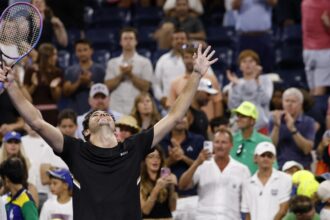MEN’S DRAW: Is there really a Big Two in men’s tennis? Or is it more a monopoly than a duopoly? After all, if Jannik Sinner had converted any of his three championship points against Carlos Alcaraz in the epic French Open final, he would now hold all four Majors. Alcaraz had defeated his arch-rival five straight times before Sinner dethroned him in the Wimbledon final, but the Italian is the undisputed King of Hard Courts. Another burning question at this U.S. Open is whether anyone else in the 128-player field can upset either of the putative Big Two, who’ve snarfed up the last seven Grand Slam titles. Let’s survey the field and size up the favourites, contenders, and dark horses.
Ben Shelton — Nicknamed ‘Box Office Ben’ for his crowd-engaging “Come on!” yells and fist pumps after winning critical points, Ben Shelton could also be dubbed ‘Big Shot Ben’ for his booming left-handed serves exceeding 140 mph. Shelton’s confidence is soaring after capturing the National Bank Open in Toronto with a come-from-behind 6-7(5), 6-4, 7-6(3) victory over No. 12 Karen Khachanov. For the third time, he triumphed in a clutch third-set tiebreak, the others over Flavio Cobolli and Brandon Nakashima. The 22-year-old Shelton thus became the youngest American man to claim a Masters 1000 title since 21-year-old Andy Roddick took the 2004 Miami Open.
Shelton’s best result at the last seven Majors came at the Australian Open in January, when he reached the semis, where Sinner outclassed him 7-6(2), 6-2, 6-2. Despite a career-high No. 6 ranking, Shelton has beaten only two top-10 opponents, Taylor Fritz and Alex De Minaur (twice), this year. The weakest backhand in the top 10, along with an erratic volley and forehand, hampers the 6’4”, 195-pound American. Until his technique improves on these three strokes, Shelton will not have a shot at winning a Major — even on hard courts, his best surface.
Alex de Minaur — Nicknamed ‘Demon’, De Minaur staved off Frances Tiafoe 6-2, 4-6, 6-4 in the fourth round of the National Bank Open in Toronto, after which he scribbled ‘Tennis Vision’ on the courtside camera lens. His superb concentration, allied with true grit and blazing speed, makes this undersized (6’ and 160 pounds) Aussie a threat to make the semifinals at Flushing Meadows. He reminds one of his Davis Cup captain — the hyper-competitive two-time Major winner Lleyton Hewitt — but with more power.
Further, he shines on hard courts, going 24-7 this year. No. 8-ranked De Minaur cannot match Alcaraz’s otherworldly athleticism or Sinner’s bone-crushing aggression, but he can beat everyone else.
Novak Djokovic — The GOAT’s quest for a record 25th Grand Slam title — which would break his tie with Margaret Court — became more uncertain when he withdrew from the Cincinnati Open. That left the No. 7 with no tournament matches between Wimbledon and the year’s final Major. Is Djokovic injured? Does he lack motivation? Does he believe it’s mission impossible? “They’re definitely several levels above everyone right now,” said 38-year-old Djokovic about Sinner and Alcaraz after Sinner outclassed him, slowed by a hip injury, 6-3, 6-3, 6-4 in the Big W semifinals.
If any champion can overcome the lack of match play for nearly two months, it is the man renowned for his superb technique and fitness. A decisive loss to Sinner or Alcaraz — or even worse, a lesser foe — could persuade the last of the legendary Big Three to hang up his tennis shoes and end his unparalleled 22-year career. Alas, that is more than likely not to happen at Flushing Meadows. The Djoker has surprised us before, most recently when he captured a gold medal at the Paris Olympics. So, who knows what he can accomplish in the late twilight of his career?
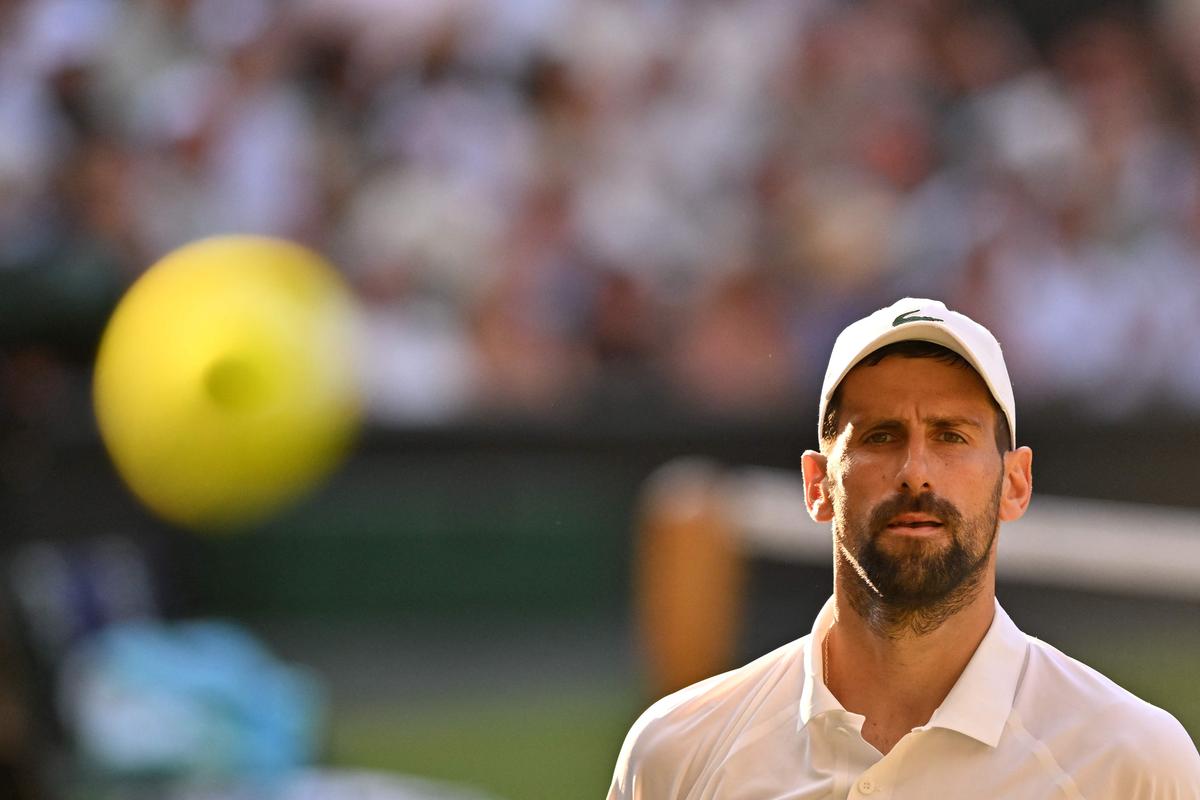
GOAT on the wane: Novak Djokovic seems to be nearing the end of a unparalleled career.
| Photo Credit:
AFP
GOAT on the wane: Novak Djokovic seems to be nearing the end of a unparalleled career.
| Photo Credit:
AFP
Taylor Fritz — A year ago at Flushing Meadows, Fritz made his first Grand Slam semifinal thanks to excellent wins over 2022 finalist Casper Ruud and Alexander Zverev. When he overcame Frances Tiafoe in a five-set semifinal, it marked the first time two American men reached the U.S. Open semis since Andre Agassi and Robby Ginepri in 2006. Hopes soared for Fritz to become the first American man to capture a singles Major since Roddick won the U.S. Open way back in 2003.
But his hopes were dashed when Sinner, far superior from the baseline, won a resounding 6-3, 6-4, 7-5. “To beat the top guy, you need to bring your best game,” the Fritz said in an honest assessment. Although his ranking has climbed to a career-high No. 4 this year, Fritz has notched only two top-10 wins — over No. 3 Zverev in Stuttgart on grass and No. 8 Rublev in Toronto on hard court. However the 6’5” mega-server fell short in the Wimbledon semis, losing 6-4, 5-7, 6-3, 7-6(6) to No. 2 Alcaraz.
Winning tiebreaks is critical, especially against ‘the top guys’, and he will have to improve on his mediocre 16-19 record this season at the U.S. Open. “The good news for Taylor Fritz,” said Tennis Channel analyst Paul Annacone, “is that his average level is unbelievably high now.” That should be good enough to propel him again to the Open semis.
Jakub Mensik — Nicknamed ‘Menimal’ for his brawny 6’5” physique and explosive shots, Mensik ranks a misleading No. 17. “He is head and shoulders above the other youngsters,” said Nicolas Pereira, a Tennis Channel analyst.
Mensik’s breakthrough tournament came in March at Miami when the 19-year-old Czech seized his first Masters 1000 title. Displaying confidence and poise in tiebreaks, he scored big wins over Jack Draper (7-6(2), 7-6(3)), Arthur Fils (7-6(5), 6-1), Fritz (7-6(4), 4-6, 7-6(4)), and in the final, his boyhood idol, Djokovic (7-6(4), 7-6(4)). “He’s a pretty cool, calm character out there,” said Tennis Channel analyst Prakash Amritraj.
Mensik — who considers the backhand down the line as his best shot and hard court his favourite surface — has not defeated a top-10 opponent since Miami. If he improves his forehand, the sky is the limit for this rising star.
Alexander Zverev — World No. 3 Zverev won his 500th career match at Toronto, but this Masters 1000 tournament once again showed why he does not win the points and matches that matter most. Against the eminently competent No. 12 Khachanov, Zverev failed to convert a match point, looked disheartened and listless as he lost the third-set tiebreak 7-4 and the match 6-3, 4-6, 7-6(4). Fortune favours the brave, and aside from a 130-plus mph first serve, the 28-year-old German lacks the weapons and conviction to beat the best — and sometimes the rest. His volleys are shaky, his forehand ordinary, and his defence mediocre.
The best active player without a Grand Slam title — though he has won an Olympic gold medal — Zverev has spent time with Rafael Nadal and his uncle and longtime coach Toni Nadal, seeking inspiration and advice.
After his five-set upset loss to 72nd-ranked Arthur Rinderknech in the Wimbledon first round, Zverev talked about his anguish: “I just feel generally very, very alone and very lonely. I don’t know. Just never felt that way before.”
If Sascha is unable to get his personal life together, he may never get his game together enough to contend for Majors.
Dynamite: A baseline basher with a monster forehand and an improved first serve, Andrey Rublev has three weaknesses: an attackable second serve, a mediocre net game, and a Vesuvian temper that can explode at any time.
| Photo Credit:
Reuters
Dynamite: A baseline basher with a monster forehand and an improved first serve, Andrey Rublev has three weaknesses: an attackable second serve, a mediocre net game, and a Vesuvian temper that can explode at any time.
| Photo Credit:
Reuters
Andrey Rublev — The 27-year-old Russian falls into the ‘best of the rest’ category, as his inability to beat the best and advance past the quarters at the Majors attests. A baseline basher with a monster forehand and an improved first serve, Rublev has three weaknesses: an attackable second serve, a mediocre net game, and a Vesuvian temper that can explode at any time.
After he was disqualified for screaming at a line judge in the 2024 Dubai semis, he shared his mental health problems with The National newspaper in a candid interview. “I was in a loop, lost with myself for a couple of years of, I don’t know, not finding the way, not understanding what to do, what for. It sounds a bit maybe dramatic or whatever, like what’s the reason or purpose to live or stuff like that.”
Marat Safin, a compatriot and two-time Major champion, along with a psychologist, has helped Rublev relieve “that crazy anxiety and stress.” With most of his inner demons exorcised, the popular member of the ATP Player Council should finally reach his on-court potential and record some big wins.
Jack Draper — Before overpowering De Minaur in the 2024 U.S. Open quarterfinals, Draper confided he considered quitting the sport because the former junior star did not think he could compete with the big boys on the ATP Tour. That all changed last year when he whipped the likes of Alcaraz, Sinner, Fritz, Holger Rune, and Stefanos Tsitsipas, and captured his first title at Stuttgart. “I’m a big guy. I can serve big. I can hit big shots,” the 6’4” Englishman told BAGEL Magazine. “I can be powerful and hit through players, but naturally I’ve got the scrap of that fighter in me. If I can stay injury-free and keep competing weekly, there’s no reason why I can’t keep on getting really good wins. I’m really excited for the coming year.”In sports parlance, Draper has ‘a high ceiling’ and proved it again this season with wins over Alcaraz, Fritz, Rune, Shelton, and Joao Fonseca to capture his most prestigious crown at Indian Wells.
Draper, 23, has plenty of weapons, starting with a wicked lefty serve that he blasts, slices, and kicks superbly. His aggressive topspin forehand and rock-solid two-handed backhand allow him to hang in there with baseline blasters. And his strong volleys and smashes decisively finish off rallies. Do not be surprised if the handsome Brit makes the U.S. Open semis again.
Chasing history: Sinner will look to become the first man since Roger Federer in 2008 to defend a U. S. Open title.
| Photo Credit:
Reuters
Chasing history: Sinner will look to become the first man since Roger Federer in 2008 to defend a U. S. Open title.
| Photo Credit:
Reuters
Jannik Sinner — What is it like playing Sinner? After being overpowered by him 7-6(2), 6-4, 6-4 in the Wimbledon quarterfinals, Shelton said: “His ball speed is really high. Never seen anything like it… When you play him, it’s almost like things are in 2x speed.” Hard courts accentuate Sinner’s high-speed game, and he has grabbed the last three Majors on that surface. For the 23-year-old Italian, ‘serve plus one’ means a massive serve followed not just by a concussive forehand but the same on his backhand wing. Not surprisingly, the World No. 1 ranks No. 1 on the ATP Leaderboard in all three categories: Serve, Return of Serve, and Under Pressure. Especially impressive and relevant is his winning 88.2 per cent of tiebreaks on all surfaces and saving 74.0 per cent of break points on hard courts.
The last time a man defended a U.S. Open singles title was in 2008, when Roger Federer won his fifth straight title. The Mighty Fed boasted more athleticism and versatility, but he faced much weaker opposition that decade than Sinner does now.
The ultimate test for Sinner once again will come in the potential final against Alcaraz. A clash of these titans almost guarantees another blockbuster.
Carlos Alcaraz — In his recently published book, Changeover: A Young Rivalry and a New Era of Men’s Tennis, Giri Nathan captured the essence of Carlitos during the 2024 Laver Cup: “Anytime he wasn’t playing tennis, he was partaking in horseplay. As much as he intimidated other players with his talent, he still remained chummy with them — hugging them, backslapping them, whispering stupid things in their ears… He was the star pupil conjoined with the class clown.”
Rivalries between superstars often fluctuate as each man forces the other to lift the level of their games. As all-time great Martina Navratilova said after their epic Roland Garros final: “These guys bring out the best in each other. It’s phenomenal.”
In his evolving rivalry with Sinner — where Alcaraz leads 8-5 — the star pupil will focus on how to both absorb and counteract the Italian’s ferocious power. To get more weight on his shots, Carlitos added five grams of weight to the throat of his racket. The most telling stat in the Wimbledon final was the large edge Sinner enjoyed in the ‘In Attack’ category — 33 per cent to 20 per cent. “It left no doubt when he’s on that even Alcaraz can’t beat him,” averred ESPN analyst John McEnroe.A critical career stat gives him a decided edge: he is a terrific 14-1 in five-set matches compared to 6-10 for Sinner.
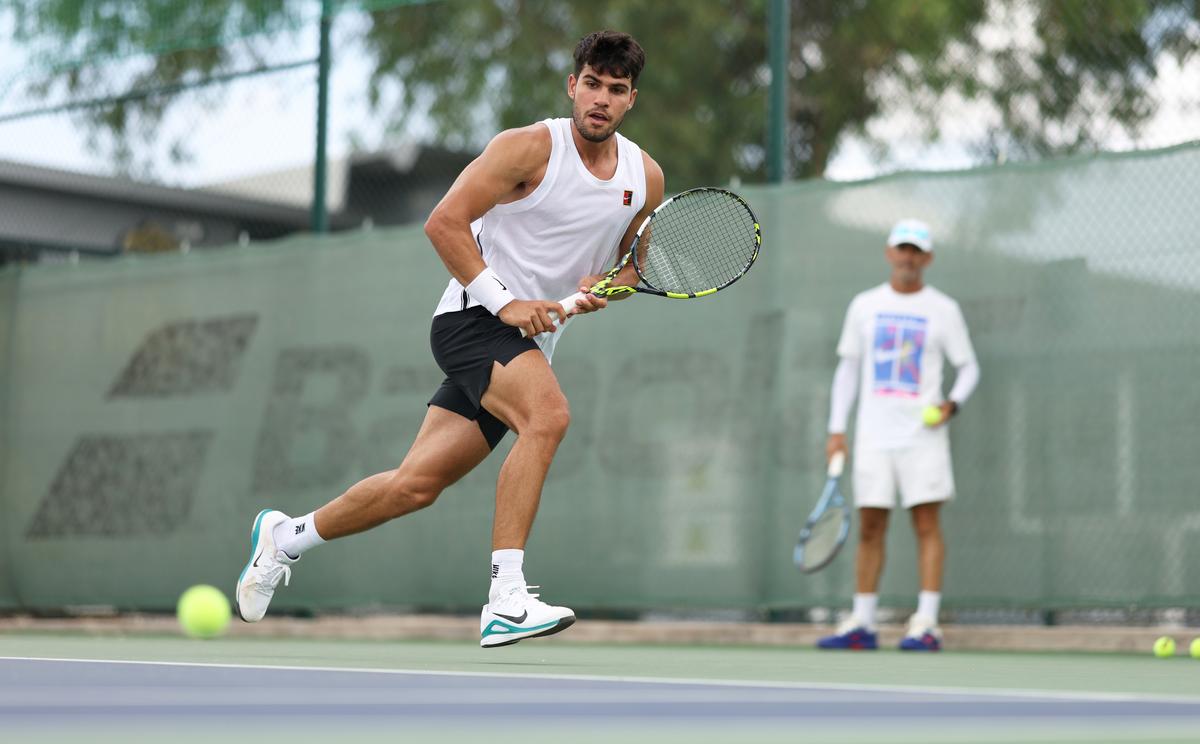
Big shots: If he meets Jannik Sinner in the final, Carlos Alcaraz must focus on how to both absorb and counteract the Italian’s ferocious power.
| Photo Credit:
Getty Images
Big shots: If he meets Jannik Sinner in the final, Carlos Alcaraz must focus on how to both absorb and counteract the Italian’s ferocious power.
| Photo Credit:
Getty Images
Now the ball is in Alcaraz’s tactical court. What will he add to his vast bag of tricks to defuse and disrupt Sinner’s ruthless, methodical power game? If they do meet in a 14th ‘Sincaraz’ duel, Alcaraz should dethrone the King of Hard Courts in another highlight-reel, five-set classic.
Dark Horses
Holger Rune, Alexander Bublik, Tommy Paul, Alejandro Davidovich Fokina, and Frances Tiafoe.
Long Shots
Giovanni Mpetshi Perricard, Jiri Lehecka, Joao Fonseca, Alexei Popyrin, Flavio Cobolli.
WOMEN”S DRAW: Aryna Sabalenka, a relentless power hitter like Sinner, won the two hard-court majors in 2024 and finished the year ranked No. 1. But unlike Sinner, who consolidated his reign this season, Sabalenka faltered at the Slams. The Belarusian Basher lost three-set heartbreakers to red-hot American opponents — Madison Keys at the Australian Open, Coco Gauff at Roland Garros, and Amanda Anisimova at Wimbledon.
Keys and Gauff prevailed in the finals. Anisimova’s ecstasy after her stunning semifinal upset of Sabalenka turned into agony two days later when the resurgent Iga Swiatek double-bageled her in the Wimbledon final. Oh, how cruel tennis can be!
Whether you call it parity or depth in women’s tennis, this Grand Slam trend will likely continue at the U.S. Open, which has produced six different champions since Naomi Osaka shocked Serena Williams in the tempestuous 2018 final. The most mind-blowing of them was 18-year-old Emma Raducanu, who in 2021 made history as the first qualifier to win a Grand Slam singles title. Tennis Channel analyst Paul Annacone said, “It has to be a top-five improbability story in any sport.”
My crystal ball predicts another long shot will rock the sporting world with a series of stunning upsets. Let’s find out who this year’s Cinderella champion will be.
Change of setting: Naomi Osaka split with coach Wim Fissette and hired Tomas Wiktorowski, Iga Swiatek’s former coach.
| Photo Credit:
Reuters
Change of setting: Naomi Osaka split with coach Wim Fissette and hired Tomas Wiktorowski, Iga Swiatek’s former coach.
| Photo Credit:
Reuters
Naomi Osaka — “She needs momentum more than anything else. I’m a huge fan of Naomi Osaka. It’s less about the tennis, it’s more about what’s between the ears,” said Tennis Channel analyst Prakash Amritraj. Her comeback since returning from maternity leave in 2023 never gained traction during seven Grand Slam appearances. The most recent disappointment: a Wimbledon third-round loss to Anastasia Pavlyuchenkova. During the prolonged slump, the four-time Major champion, dispirited, contemplated retirement.
Too talented to fail any longer, Osaka — who split with coach Wim Fissette and hired Tomasz Wiktorowski, Swiatek’s former coach — finally regained her elite form in Montreal. Slapping her thighs before returning serve to pump herself up, the rejuvenated Japanese surged to the final. The unseeded Osaka outslugged heavy hitters 13th seed Liudmila Samsonova and 22nd seed Jelena Ostapenko, combined power with consistency to trounce 10th seed Elina Svitolina, and outhit 16th seed Clara Tauson to reach her first WTA 1000 final since 2021. There, it took a sensational performance by teenager Victoria Mboko to stop her, 2-6, 6-4, 6-1.
On the 27-year-old’s resurgence, Tennis Channel analyst Andrea Petkovic noted, “She has an improved serve and a shorter take-back on the backhand, which helps her on the hard courts.” With better technique, much-needed momentum, and renewed confidence, Osaka will go deep into the second week at a Major for the first time since she won the 2021 Australian Open.
Clara Tauson — In 2019, Tauson became the first Dane to top the junior world rankings after winning nine ITF singles titles, including the Australian Open. Unlike former No. 1 Caroline Wozniacki, who became the greatest female player in her country’s history as a heady and steady baseliner, Tauson epitomises ‘Big Babe’ tennis. A back injury derailed her promising professional career in 2022, but the low-key, 22-year-old Tauson is finally emerging as a formidable force.
After the 5’11” Tauson stunned Swiatek 7-6(1), 6-3 at the National Bank Open in Montreal, Petkovic said, “Such an impressive performance. Not only the firepower, (but also) the tactics, the slices, the anticipation, the variety.” That was no fluke, as she followed it up with a decisive 6-1, 6-4 victory over Australian Open champion Keys.
Currently No. 15 in the live (2025) rankings, Tauson plays intimidating first-strike tennis on both serve and when returning second serves. In her case, the best defence is an excellent offence because her biggest weakness is her below-average movement.
“She can rocket-fire her forehand, but it can go off for her when she’s rushed,” said Petkovic. As women’s tennis gets faster and faster, how fast Tauson runs will determine her success both offensively and defensively. With a decent draw, she’ll make the quarterfinals.
Strength and grace: Currently No. 15 in the live rankings, Clara Tauson plays intimidating first-strike tennis on both serve and when returning second serves.
| Photo Credit:
Reuters
Strength and grace: Currently No. 15 in the live rankings, Clara Tauson plays intimidating first-strike tennis on both serve and when returning second serves.
| Photo Credit:
Reuters
Jessica Pegula — This late-blooming, 31-year-old American made the 2024 U.S. Open final to join Rosie Casals (1970), Evonne Goolagong Cawley (1973), and Serena Williams (2013) as the only women in the Open Era to reach the final at the Canadian Open, Cincinnati Open, and US Open in the same season. Hard courts are her most successful surface, and her favourite tournament is the U.S. Open. JP, as she is nicknamed, co-ranked No. 1 in doubles with Coco Gauff after the 2023 U.S. Open.
Pegula’s hard-court record this season is solid, much like her all-court game, but she has no top-10 wins. That accurately reflects her relatively low ceiling and her inability to beat elite players at Grand Slam events (except for a slumping Swiatek at the 2024 U.S. Open). Without a huge offensive weapon like the Sabalenka serve or a great defensive asset like Gauff’s speed, the 5’7” Pegula is destined to remain in the top 10. But the world No. 4 — who looked sluggish in recent early-round upset losses to Leylah Fernandez and Anastasija Sevastova — won’t make the Flushing Meadows final again and could lose before the quarterfinals.
Coco Gauff — Gauff was tabbed for future stardom ever since she became the youngest girls’ finalist in U.S. Open history as a 13-year-old prodigy in 2017. She credits her girlhood idols, Serena and Venus Williams — whose fearlessness and tenacity she admired — for taking up the sport. Ironically, in her Grand Slam debut, Gauff upset Venus in the 2019 Wimbledon first round. Amazingly, the veteran returned to the pro tour this summer at age 45 after a 16-month absence, and they could conceivably meet again.
Gauff’s road towards the top has been more uneven than her current No. 2 ranking suggests. Although she upset Sabalenka in come-from-behind, three-set finals to capture the 2023 U.S. Open and 2025 French Open, all too often she has self-destructed, committing a rash of confidence-sapping double faults and wild unforced forehand errors. During her latest slump following Roland Garros, Gauff lost in the first round at Berlin and Wimbledon, and in the third round at Montreal to rookie Mboko, an 18-year-old Canadian wild card, 6-1, 6-4. Her double fault woes continued as she made 23 against Danielle Collins, 14 against Veronika Kudermetova in three-set wins, and five more among her 24 unforced errors against Mboko.
Looking at the bright side of her rollercoaster season, Tennis Channel analyst Nicolas Pereira pointed to her 9-1 record in three-set matches, saying, “She does it with her wheels, and she does it with her heart.” But her splendid backhand, strong first serve, exceptional mobility, and fighting spirit can only take her so far if she keeps beating herself.

Coco Gauff credits her girlhood idols, Serena and Venus Williams — whose fearlessness and tenacity she admired — for taking up the sport.
| Photo Credit:
Getty Images
Coco Gauff credits her girlhood idols, Serena and Venus Williams — whose fearlessness and tenacity she admired — for taking up the sport.
| Photo Credit:
Getty Images
Which Gauff will show up at Flushing Meadows? Only the best version of herself stands a chance of making the semis this year.
Madison Keys — ‘Maddy’, as her friends call her, had dreamed of winning a Grand Slam title since her teenage days when she was touted as a future star. Keys reached her first Major final at the 2017 U.S. Open, only to freeze under the pressure and succumb 6-0, 6-3 to fellow American Sloane Stephens.
Heartbreaking close losses to elite players, such as her 0-6, 7-6(1), 7-6(5) semifinal setback to Sabalenka in the 2023 U.S. Open, left Keys doubting whether she’d ever achieve her dream. At 29, she finally marshalled her heavy artillery — powerful serves and forehands — with newfound consistency and tactical clarity at the 2025 Australian Open. Under the guidance of husband-coach Bjorn Fratangello, she changed her service motion, her racket (from a Wilson to a Yonex), and her attitude.
After she fought off a match point and upset Swiatek 5-7, 6-1, 7-6(8) in a semifinal thriller, Keys said, “The big thing for me has been knowing that there are going to be a lot of moments where I’m uncomfortable in the match. It’s going to be stressful. But instead of trying to shy away from that … (I am trying to view it as) OK that that’s the situation, and you can also play tennis through that.” Keys, a 22-1 pre-tournament long shot, did exactly that again in the final, thriving on the pressure, to stun Sabalenka 6-3, 2-6, 7-5 for her first Major.
Since that euphoric moment when she blasted a forehand winner on championship point, Keys has come back down to earth. Ranked No. 6, she’s reached two semifinals and three quarterfinals, her best results. Maddy knows she can beat anyone now, but she can also lose to lesser lights like Alexandra Eala (Miami) and Laura Siegemund (Wimbledon). Keys will acquit herself well in New York and likely make the quarters.
Mirra Andreeva — When the self-confident, 18-year-old Russian is good, she’s really, really good. Mirra whipped Swiatek, former Wimbledon champions Rybakina and Marketa Vondrousova, and Tauson to win Dubai in February. That made Andreeva, then 17, the youngest 1000 champion since Caroline Wozniacki in 2009.
Andreeva’s litany of distinguished victims only grew at Indian Wells, where she claimed her second WTA 1000 title. She swept past Tauson, Rybakina, and Svitolina in straight sets to reach the semis. Then the 5’10” athlete showcased her all-court game — serves up to 120 mph and baseline versatility — to edge No. 2 Swiatek 7-6(1), 1-6, 6-3 and No. 1 Sabalenka 2-6, 6-4, 6-3. Fun to watch on court, the multilingual prodigy is even funnier during interviews, with a clever repartee that belies her age.
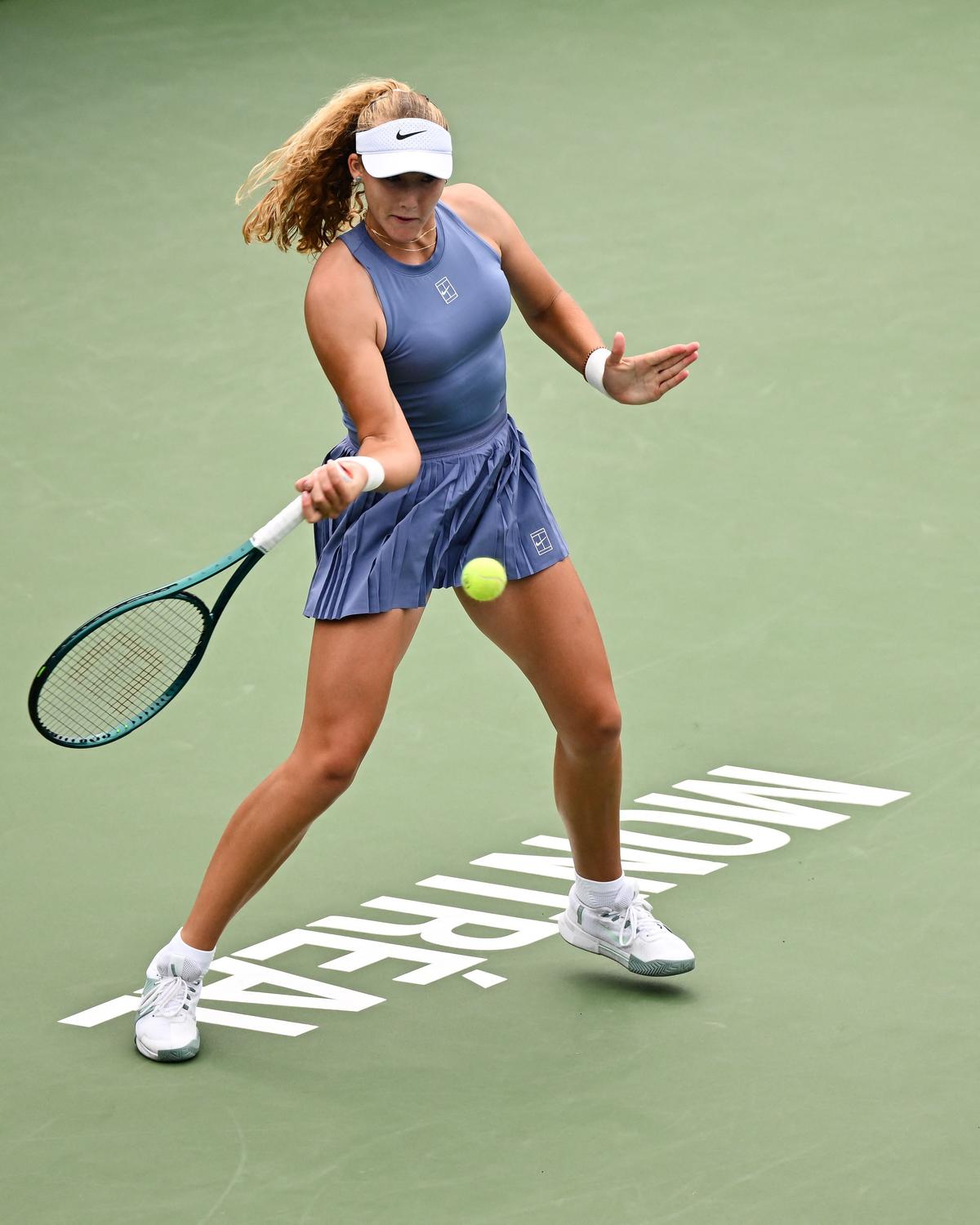
MIrra Andreeva’s litany of distinguished victims only grew at Indian Wells, where she claimed her second WTA 1000 title. She swept past Tauson, Rybakina, and Svitolina in straight sets to reach the semis.
| Photo Credit:
Getty Images
MIrra Andreeva’s litany of distinguished victims only grew at Indian Wells, where she claimed her second WTA 1000 title. She swept past Tauson, Rybakina, and Svitolina in straight sets to reach the semis.
| Photo Credit:
Getty Images
Tracy Austin, a teen queen who captured two U.S. Opens before injuries derailed her brilliant career, said, “Her forehand is so much improved. Her incredible shot is a forehand slice on the run. To have Conchita Martinez (as her coach) is an absolute genius. She watched a motivational video from LeBron James, who advised, ‘If you can’t be 100 per cent physically, you have a choice to be 100 per cent mentally.’ She’ll win Grand Slams for sure.”
The ambitious Andreeva, ranked No. 5, brings notes to the court and gets instructions from Martinez during matches. However, she occasionally lapses into teenage moodiness and passive play when the going gets tough. Andreeva will doubtless win Majors, but a quarterfinal showing is more likely this fortnight.
Iga Swiatek — “For her to win her first title in 13 months and do it at Wimbledon was monumental,” said Amritraj. “Her defence is phenomenal, and she’s serving better than ever.” Swiatek’s signature weapon, a powerful Western topspin forehand, has also improved — its ‘shot quality’ increased from 8.0 in 2024 to 8.6 this year.Swiatek became the first Polish player to win the Wimbledon title during the Open Era and the third woman in the Open Era to win all of their first six Grand Slam singles finals, after Margaret Court and Monica Seles. Although she never faced a top-10 opponent at the Big W, she dropped only 19 games in her last five matches, overwhelming 2021 Olympic gold medallist Belinda Bencic 6-2, 6-0 in the semis and surprise finalist Anisimova 6-0, 6-0.
Her resume includes the 2022 US Open title, but she has often been beaten on hard courts by heavy hitters such as Sabalenka (three times), Keys (twice), Rybakina (twice), Tauson, Collins, and Linda Noskova.
With the 24-year-old’s brilliant career back on track, this intense perfectionist can relax a bit and resume winning Majors. Though that is unlikely to happen in New York, where she will advance to the semis or possibly the final, depending on her draw.
Aryna Sabalenka — How can the No. 1 player in the world, with a huge 4,341-point lead over No. 2 Gauff (as of August 11) and the holder of three hard-court Grand Slam titles, not be a solid favourite to win her fourth at the U.S. Open? The short answer is that Sabalenka, despite her many assets — most notably, her flawless technique, potent shots, and increasingly versatile game — has a habit of losing matches she should win. Experience is said to be the best teacher, and Sabalenka has adopted a sensible perspective. After her third straight, three-set Grand Slam loss to an American — Anisimova 6-4, 4-6, 6-4 in the Wimbledon semifinal — Sabalenka said, “Losing sucks, you know? You always feel like you want to die, you don’t want to exist anymore, and this is the end of your life. But then you sit there a little bit, and you think about what you could have done differently in the match. I mean, you see stuff where you weren’t at your best in the match. You see that the other player performs much better. You kind of, like, can see things better.”
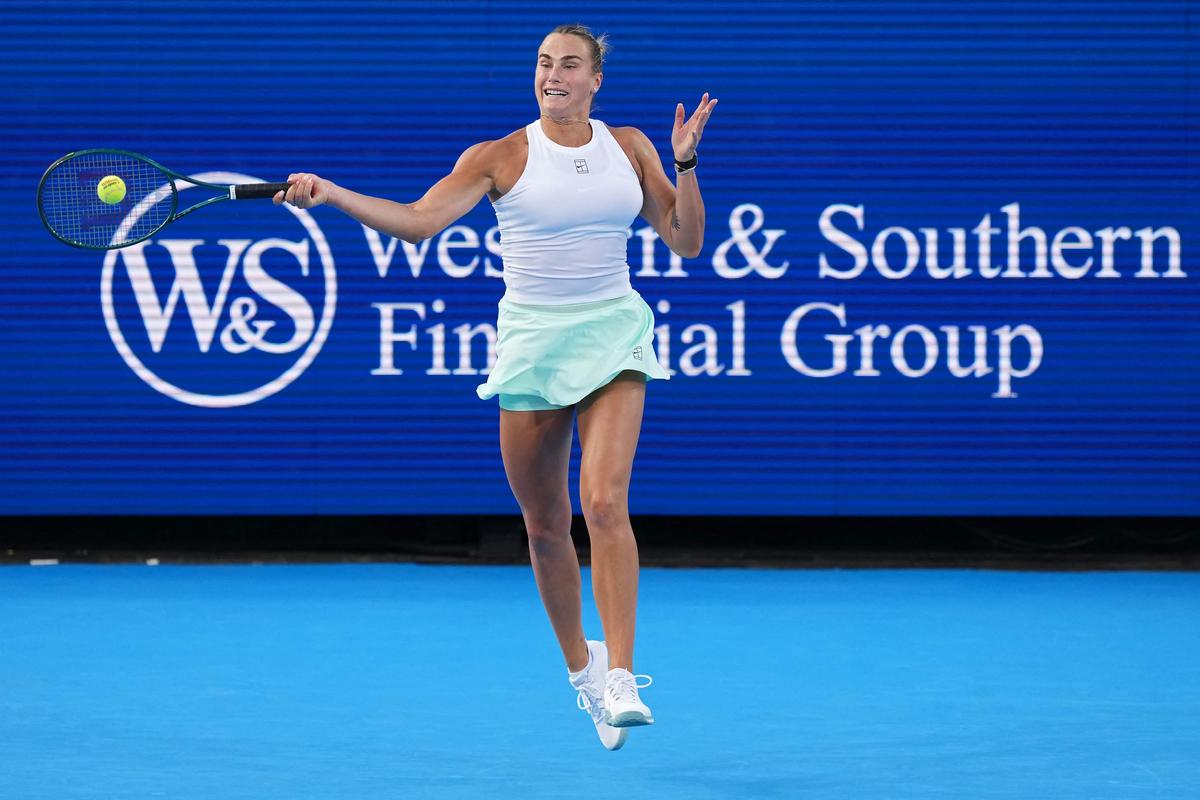
A worrying trend: World No. 1 and defending champion Aryna Sabalenka, despite her many strengths, has developed a habit of losing matches she should win.
| Photo Credit:
Getty Images
A worrying trend: World No. 1 and defending champion Aryna Sabalenka, despite her many strengths, has developed a habit of losing matches she should win.
| Photo Credit:
Getty Images
Easy to say, but not so easy to do, given the scar tissue this extremely emotional Belarusian has accumulated. Sabalenka relaxes on social media, where she has a huge following. In an Instagram video with Gauff, Sabalenka posted, “TikTok dances always had a way of bringing people together.”
It’s hard not to predict she will make the U.S. Open final — but once there, Sabalenka may falter yet again.
Victoria Mboko — This Cinderella from Canada said all the right things just as she hit the right shots during her breakthrough tournament at the National Bank Open in Montreal. After the wild card Victoria Vanessa Mboko staved off a match point to upset former Wimbledon champion Rybakina 1-6, 7-5, 7-6(4) in the semifinals, she was asked if she could win the title. She told the enchanted spectators, “Anything can happen.”
Indeed, it can — and it has. Energised by cheering fans waving ‘ALLEZ VICKY!’ signs and wearing oversized face masks of her, Mboko, at 18 years and 336 days, made history as the second-youngest woman in the Open Era to vanquish four Grand Slam champions at the same WTA event. (Serena, the women’s GOAT, was 17 when she won the 1999 U.S. Open.)
Besides Rybakina, Mboko knocked out 2020 Australian Open winner Sofia Kenin 6-2, 6-3, Gauff 6-1, 6-4, and Osaka, her childhood idol, 2-6, 6-4, 6-1. After she outclassed No. 2 Gauff for the biggest win of her budding career, Tennis Channel analyst Paul Annacone said, “What amazed me most is it looked like Mboko felt she didn’t have to play outside of her game, her comfort zone. Coco was off, but a lot of that was due to Mboko’s power and consistency.”
A strongly built 5’10”, Mboko can whack aces and pummel groundstrokes like Serena, but she can also change pace and tactics. Against Osaka, she conjured a disguised drop-shot winner to break serve for 3-1 in the deciding set. “Her willingness to run and trade groundstrokes and allow opponents to beat themselves, that’s the most impressive thing,” said Tennis Channel’s Mark Petchey.
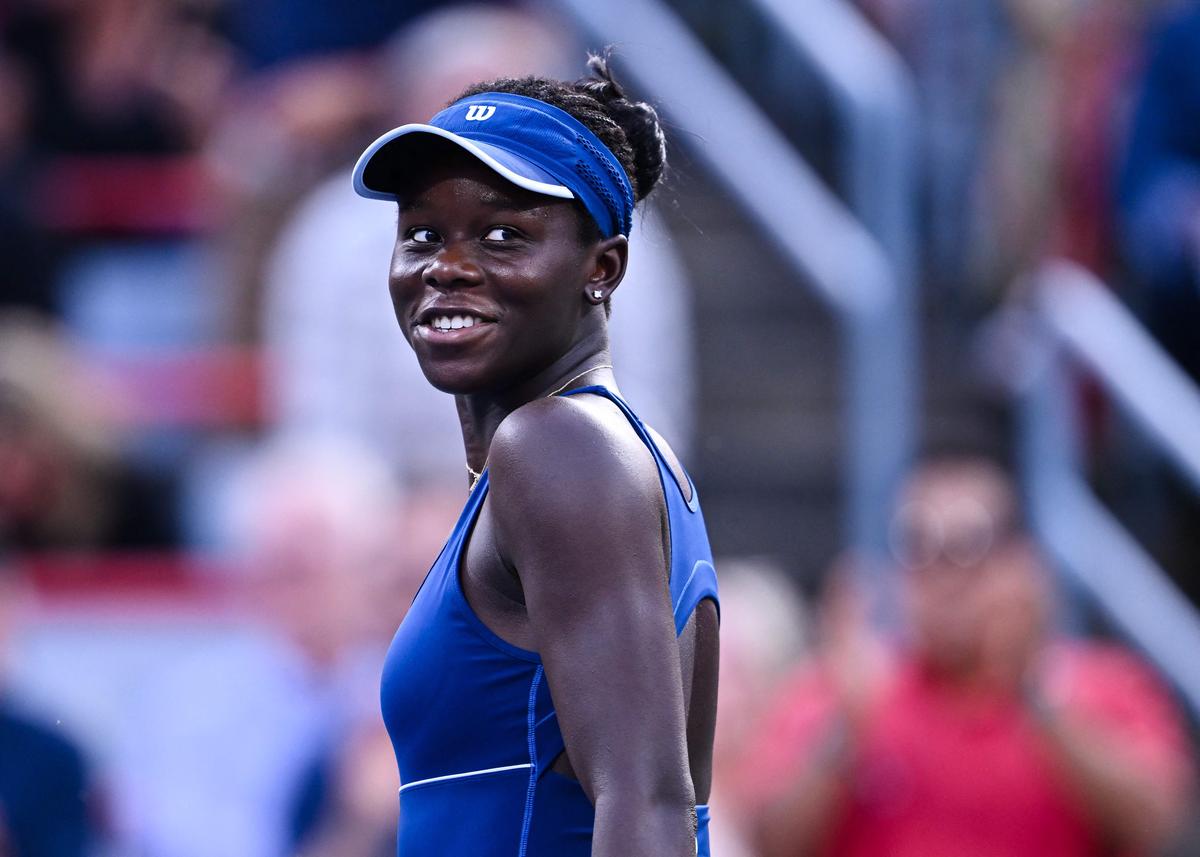
On the rise: Victoria Mboko has skyrocketed from No. 333 to No. 24 this year.
| Photo Credit:
Getty Images
On the rise: Victoria Mboko has skyrocketed from No. 333 to No. 24 this year.
| Photo Credit:
Getty Images
Her Serena-like competitiveness repeatedly drew loud cheers from the crowd. She sustained a right wrist injury from a fall against Rybakina but received a favourable MRI result on the morning of the final.
When Osaka tapped a seemingly unreachable drop shot, Mboko fearlessly lunged and struck a forehand winner before landing on her stomach.
Mboko, the daughter of emigrants from the Democratic Republic of the Congo who first came to the U.S. and then moved to Canada, has skyrocketed from No. 333 to No. 24 this year. The U.S. Open will again showcase Mboko Magic when the latest teen queen captures her first Grand Slam title.
Dark Horses
Amanda Anisimova, Karolina Muchova, Xinyu Wang, Linda Noskova, and Dayana Yastremska.
Long Shots
Diana Shnaider, Jessica Bouzas Maneiro, Taylor Townsend, Katerina Siniakova, and Alycia Parks.
Published on Aug 24, 2025
More stories from this issue
Nguồn: thehindu




